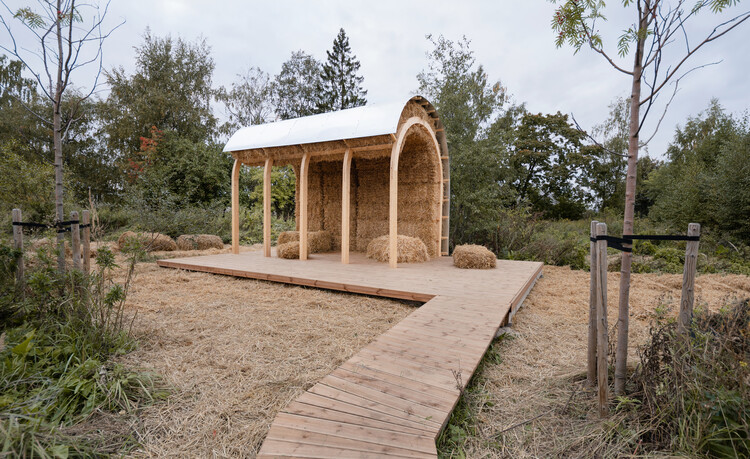
-
Architects: Kollektiiv
- Area: 40 m²
- Year: 2022
-
Photographs:Laura Rohtlaan, Paco Ulman, Lars Erik Elseth
-
Manufacturers: Arcwood, Puumarket, Sadala Agro, Toode

Text description provided by the architects. The 'Straw Chapel' is a pavilion that values sustainable building methods and materials, communal activities, a do-it-yourself attitude, and spending time outdoors. By providing a space for holding events, workshops, or simply resting on a long walk, the pavilion connects the locals and the everyday commuters from the Pollinator Highway. The chapel was partially built during an experimental workshop involving the local community.













































